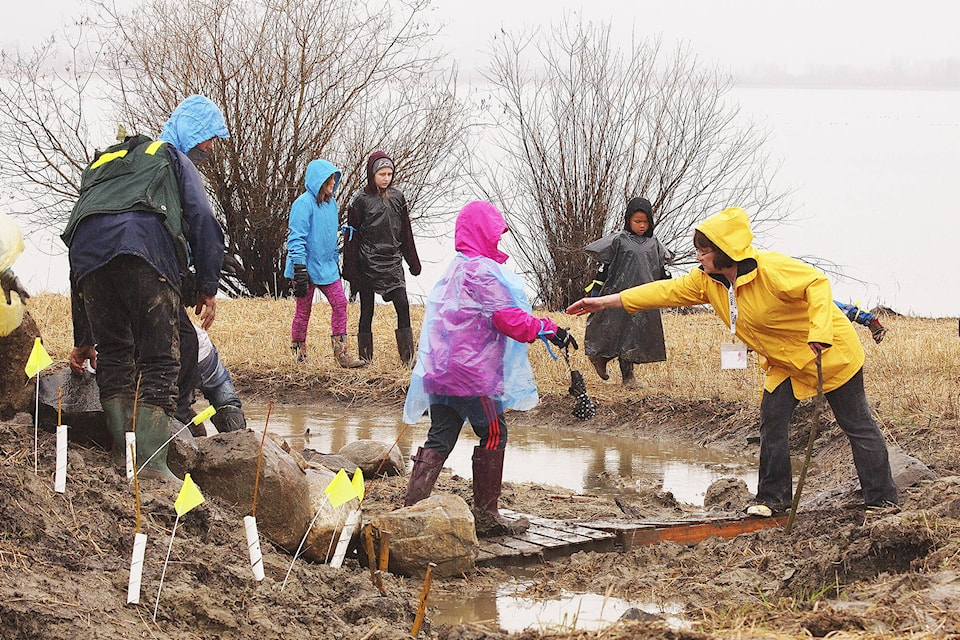Elementary through high school students braved the inclement weather last week to make the Salmon Arm foreshore a healthier habitat for animals who call the place home.
The Salmon Arm Bay Nature Enhancement Society, City of Salmon Arm, the Habitat Conservation Trust Foundation and some School District #83 staff and students were involved in a large project to increase biodiversity on the foreshore.
Over time, large portions of the foreshore have become monocultures of reed canary grass, an aggressive plant species that easily chokes out other native competitors.
In the fall, four large mounds of earth, or hummocks, were created with the goal of planting them with indigenous trees and shrubs to create a more diverse habitat for birds, reptiles, small mammals and larger mammals.
Staff, volunteers and students from SAS Sullivan and Jackson campuses, Bastion, Hillcrest, Shuswap Middle School and Salmon Arm West, as well as a group of Scouts, accounted for close to 200 young people, who planted together from April 3 to 7.
Kim Fulton, former teacher in charge of co-ordinating the planting and avid environmentalist says he believes in protecting as well as restoring the environment and having a habitat for all species.
“You can’t take parts of the system away and expect it to work properly and you can’t keep modifying the environment for humans and expect a healthy ecosystem,” says the environmental ecologist. “The way I am looking at the habitat, which gets its funds from hunting, fishing, trapping and guiding licences, is wanting to give back to protect the environment.”
Fulton says it’s incredibly important to involve the youth because kids are the future decision-makers – both as individuals who will be out working on backhoes and skidders, but also future MLAs, council members and other decision-makers.
“I believe if kids love the environment at an early age and understand how systems work, they will be less likely to make the mistakes that we humans seem to make,” he said.
Fulton is pleased that Hillcrest Elementary may be one of the few local institutions to have earned the Heritage Conservation Trust Fund’s “Wild School” designation. Most School District #83 teachers have taken part in wild school training through the trust’s educational wing.
“The Ministry of Environment used to try to do its own educational part for B.C. citizens and found there were calls for biologists who weren’t trained in education and were taken away from their biology tasks, so Wild BC was set up as a separate entity to deliver education to teachers and students in the early to mid ‘90s.”
In a letter to parents, students and volunteers, Fulton warned that everyone would be getting pretty dirty and that educational stations for the kids would explain relevant habitat and our local biodiversity.
Also enthusiastic about the planting project is Shannon West, a Habitat Conservation Trust Foundation communications and outreach representative, who explained the organization’s role in granting funds, something they have done for SABNES on other occasions.
“The reason why we have a particular interest in this project is it’s a great combination of an educational component combined with an actual restoration project.”
West says the trust provides funding for enhancement and restoration of fish habitat and wildlife in B.C. for about 140 projects a year.
“Another part is educational; we give small grants to schools for outdoor living experiences and the wild school program for schools that want to integrate environmental learning into the classroom,” says West, noting biologist Gerry Leering was in charge of the hummock building in the fall. “In this case we have a planting event where a lot of alumni of these programs will be actively participating in this project that we’re also funding.”
